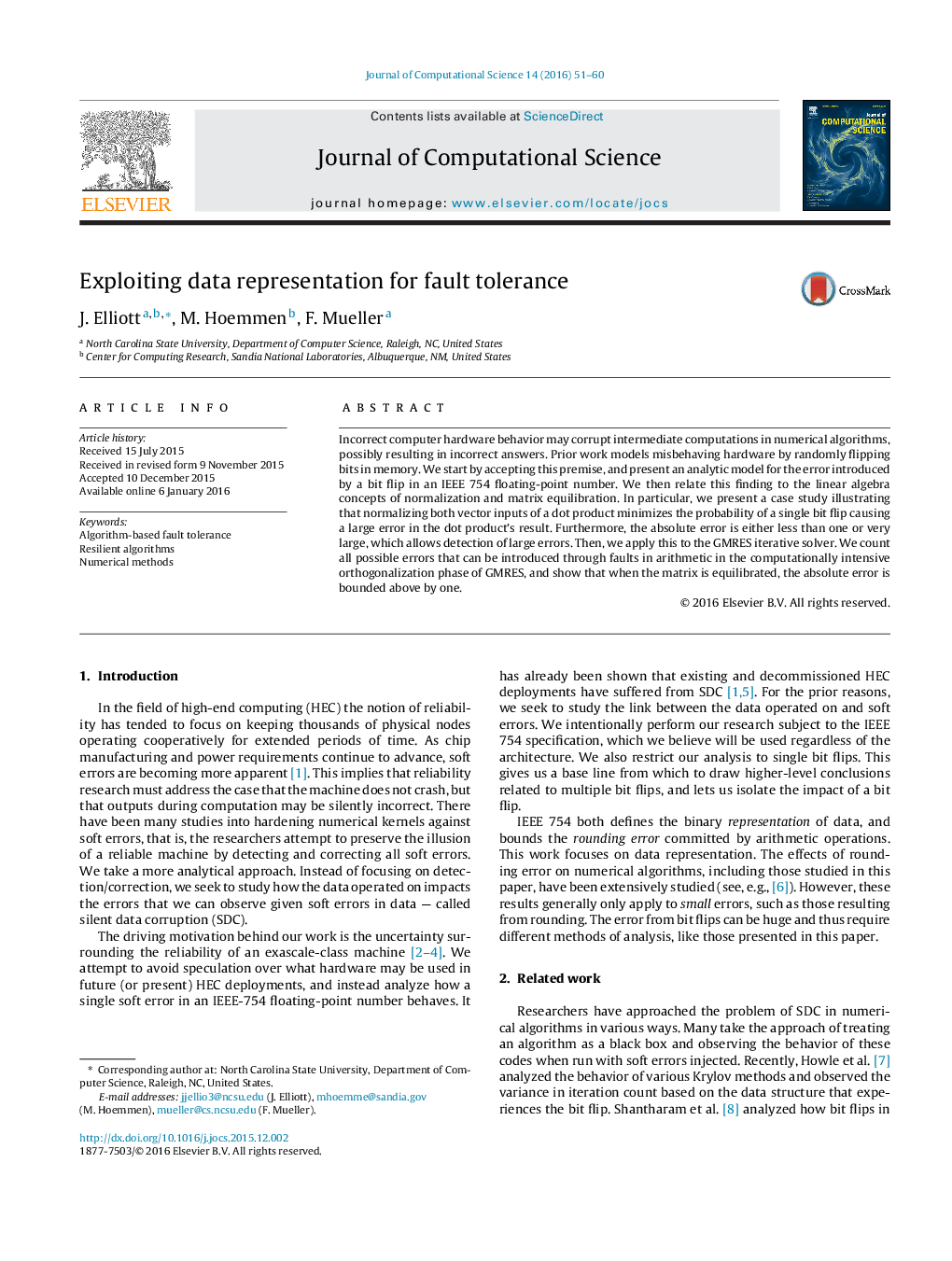| Article ID | Journal | Published Year | Pages | File Type |
|---|---|---|---|---|
| 430040 | Journal of Computational Science | 2016 | 10 Pages |
•We relate the model of IEEE-754 floating point values to bit flip fault injection.•We examine how a bit flip manifests through Monte Carlo simulation.•We identify an interval that minimizes the occurrence of large numerical errors.•We demonstrate our findings through an instrumented GMRES solver.
Incorrect computer hardware behavior may corrupt intermediate computations in numerical algorithms, possibly resulting in incorrect answers. Prior work models misbehaving hardware by randomly flipping bits in memory. We start by accepting this premise, and present an analytic model for the error introduced by a bit flip in an IEEE 754 floating-point number. We then relate this finding to the linear algebra concepts of normalization and matrix equilibration. In particular, we present a case study illustrating that normalizing both vector inputs of a dot product minimizes the probability of a single bit flip causing a large error in the dot product's result. Furthermore, the absolute error is either less than one or very large, which allows detection of large errors. Then, we apply this to the GMRES iterative solver. We count all possible errors that can be introduced through faults in arithmetic in the computationally intensive orthogonalization phase of GMRES, and show that when the matrix is equilibrated, the absolute error is bounded above by one.
